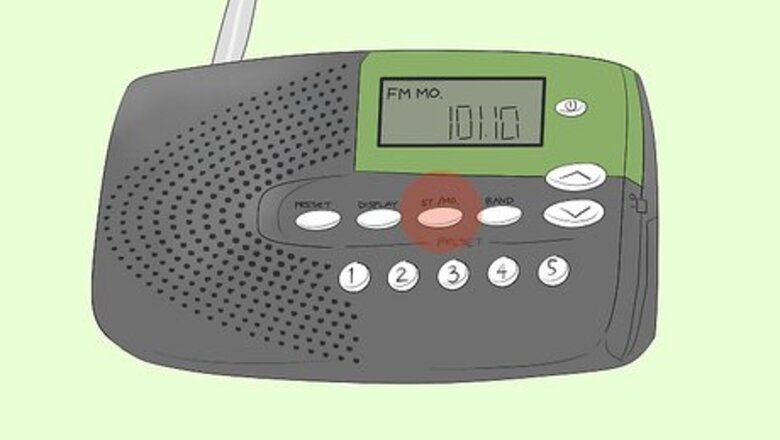
views
Reducing Interference
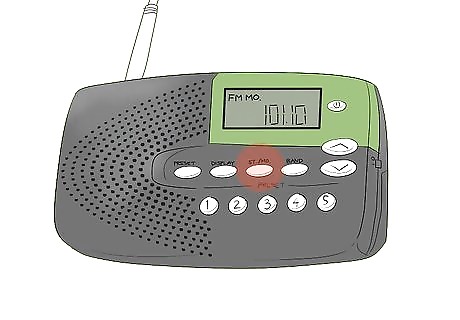
Switch to FM mono. While more radios than ever now lack this feature, you can still find some radios with it if you look hard enough, often appearing in a switch or "FM mode" button. FM stereo is the standard way to play a radio broadcast with stereo audio. It's used by most radios today. Look for a switch on the side of the radio that has FM/FM stereo. The process of converting an FM signal to stereo degrades the noise/signal ratio. This means the signal is actually worse in stereo. On some radios, this can make a big difference. You may have even noticed your car radio sometimes switch to mono. For the best signal, switch to mono. This may be one reason why people claim radio reception was better before the late 60s, which was when FM stereo was invented.
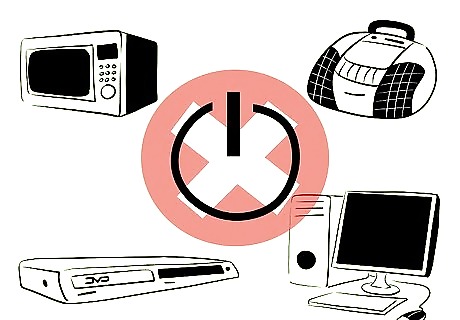
Turn off nearby electronics. Many electronics in your house can weaken radio signals. Be sure to move away from or turn these off. Effects may be mild or severe depending on the strength of your radio and how far away you are from them. Examples include monitors/screens, computers, cable boxes, microwaves, halogen or fluorescent bulbs, CD players, VCRs, DVD players, and light dimmer switches.
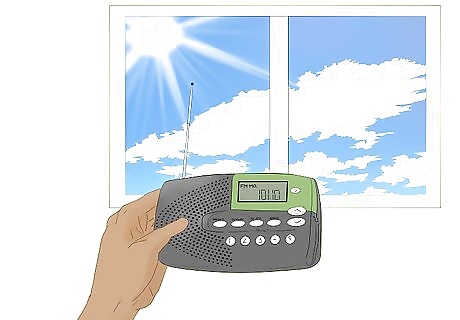
Change your location. The nature of radio signals means that some sweet spots may exist even in the same room. Try moving the radio around, trying different rooms. Location is said to be one of the most important things for radio reception. Steel and concrete can have a noticeable effect on radio reception. It's most ideal if your radio is higher up, without obstruction, and closer to the transmitter. If you have an outdoor antenna, it should be on the roof if that was where its meant to go.
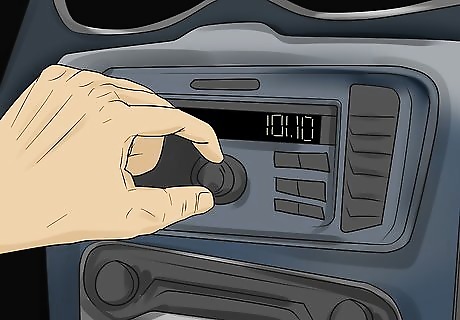
Check to see if your car radio can pick up the station. Unlike portable radios, car radios are used when driving around at high speeds, possibly going past varying terrain and roads. What this means is that they have to be built to high standards, otherwise the radio would have frequent interference on the road. This also means that they can typically see farther than your home radio. They also need to be powerful enough to resist the interference of your engine. If you need your car radio to pick up a station, it's probably time for a roof-mounted antenna, which is in the next method of this article.
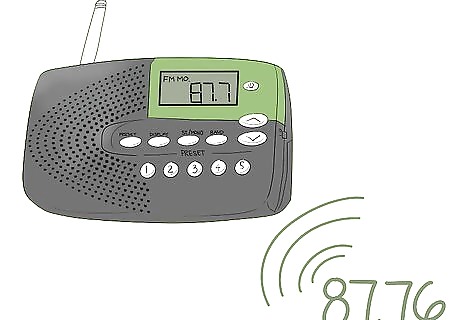
Understand "Franken FM" stations. Over many years, many TV stations have attempted to broadcast on the radio through 87.76, and have succeeded. If the radio station you are trying to pick up is on 87.7, then you may not have realized you are actually hearing the remnants of something on television. Buy a TV antenna or set your radio station to tune in increments of 0.5 in order to get 87.75 or 87.76. Once you do this, you will be able to hear the music these stations are broadcasting.
Improving Your Antenna

Try a dipole antenna. This comes with some radios. It is a basic T-shaped antenna with two branches for detecting signals in two places. Make sure the antenna is on a window. Spread the two branches out as much as possible and perpendicular to each other. This works decently and is a step up from cheap radio antennas, however, don't expect anything extreme or remarkable.
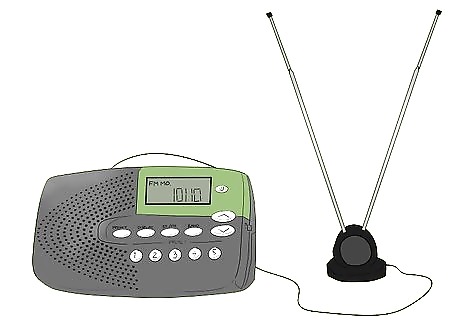
Try various indoor antenna types. If your reception improves when you touch or stand near your radio, that means your antenna is not enough for amplifying the signal as it is. Experiment with your options: Do not use an antenna that is meant for UHF; this will not work well. You will only get a slight improvement if you use a UHF antenna, or even more likely, the signal will worsen! Try rabbit ears. These are meant for TV but have the VHF tuning necessary for radio. A rabbit ear antenna will often perform well. Remove any "FM" blockers on your antenna which are often built into rabbit ear antennas. Try a basic antenna wire. This is cheap and won't be super effective if your radio and location are bad. Fully extend any built-in antennas. Many VHF antennas will require an adapter to plug into your radio unless your radio has a TV antenna input, which some radios do.
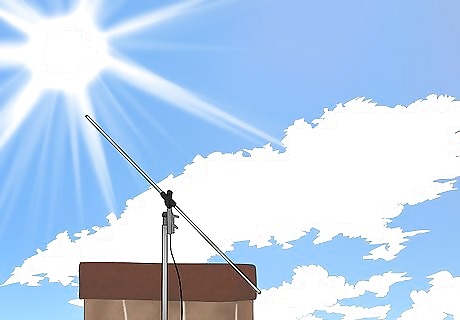
Try outdoor antennas. An outdoor antenna is the best type of antenna available, but expensive. The antenna can actually worsen the signal if not adjusted properly. Make sure it is outdoors, roof-mounted, or in the attic. Most roof antennas will give you radio reception similar to a car radio, or often better. Try repurposing a TV antenna you already have; use an FM splitter to use it on your radio. This can be good if you don't want to pay for an FM radio antenna but have one of these around. Consider an omnidirectional radio antenna. This will detect radio signals from all sides. If you use an antenna rotator or don't need to detect radio signals from all sides, get a directional radio antenna. These antennas are so effective that radio stations use them to detect the strength of their stations.
















Comments
0 comment